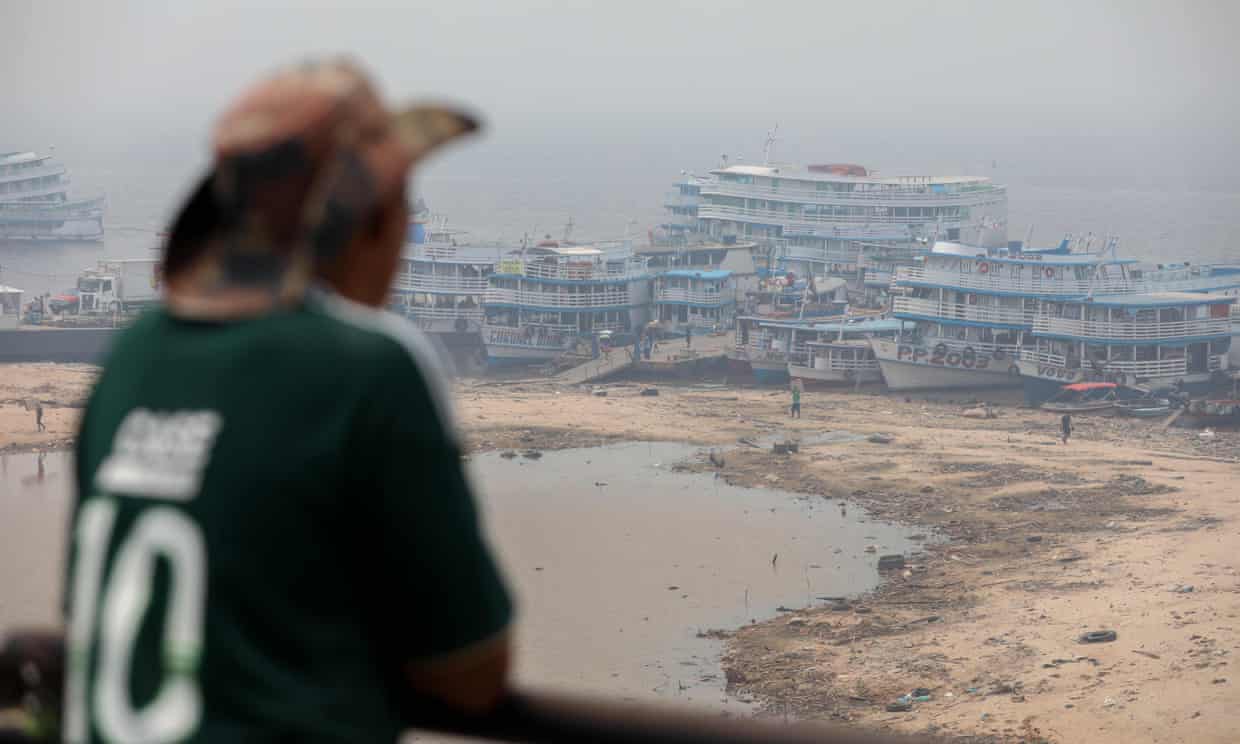
A withering drought has turned the Amazonian capital of Manaus into a climate dystopia with the second worst air quality in the world and rivers at the lowest levels in 121 years.
The city of 1 million people, which is surrounded by a forest of trees, normally basks under blue skies. Tourists take pleasure boats to the nearby meeting of the Negro and Amazon (known locally as the Solimões) rivers, where dolphins can often be seen enjoying what are usually the most abundant freshwater resources in the world.
The forest capital has been enveloped in a murky brown haze reminiscent of China during its most polluted phase. The usually vibrant port has been pushed far out across the dried-up, rubbish-strewn mud flats.
So many fires are burning in the surrounding tinder-dry forest that air-quality monitors last week registered 387 micrograms of pollution a cubic metre, compared with 122 in Brazil’s economic capital of São Paulo. The only city in the world that measured worse was an industrial centre of Thailand.
The drought has affected swathes of Brazil. The state of Amazonas has recorded 2,770 fires during the current dry season, which local media said was the highest recorded.
Rivers are the only means of access in many parts of the Amazon. As their levels have fallen, some communities have been cut off, raising concerns of a humanitarian disaster. Elsewhere, navigation is only possible by small boats, which make transport more expensive. At Tabatinga, Benjamin Constant and Atalaia do Norte, people complain that goods are becoming more expensive.
Road industry lobbyists are using the crisis to push demands for a new paved road – the controversial BR 319 – that would link Manaus to Porto Velho. Amazon conservationists warn this would be a disaster for one of the last remaining areas of globally important and intact forest.